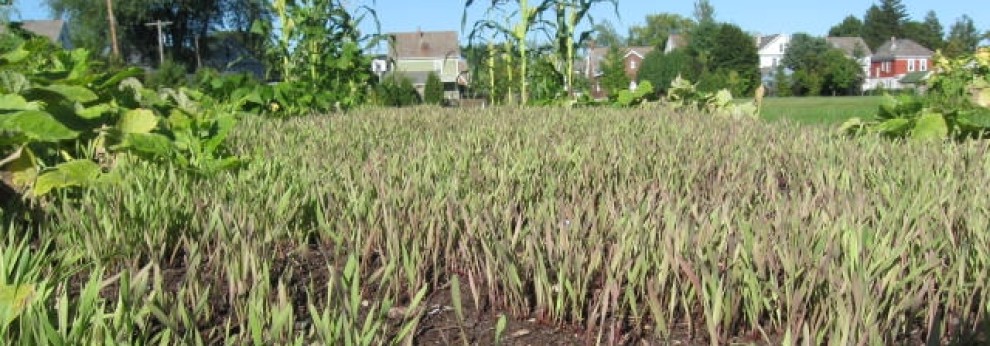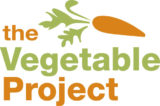 Myers Middle School students scooped seeds from freshly plucked tomatoes last fall as we began another year of our afterschool Garden Club at the school. We followed instructions to ferment the seeds, dry them and then store them. Then, months later, a certain Vegetable Project volunteer dropped a handful of those seeds in a small container of potting mix and sat tight for nine days. Then, voila! Twenty or so tiny tomato plants pictured here.
Myers Middle School students scooped seeds from freshly plucked tomatoes last fall as we began another year of our afterschool Garden Club at the school. We followed instructions to ferment the seeds, dry them and then store them. Then, months later, a certain Vegetable Project volunteer dropped a handful of those seeds in a small container of potting mix and sat tight for nine days. Then, voila! Twenty or so tiny tomato plants pictured here.
It is so easy to germinate tomato seeds that this is almost cheating. But we have here the faint beginnings of an endless cycle of hands-on learning opportunities that, if we can pull it off, will create an array of positive learning experiences that we might argue belong in every students’ schooling. And if we can get started with tomatoes, we can move on to other more challenging plants. Broadly, the idea here is to expose students to the endless plant lifecycle – let’s say from seed to seed, but just as accurately from seed-bearing plant to seed-bearing plant, with reasons to get outside and get hands dirty. And stops along the way can provide more meaningful exploration of pollination, genetics, recycling of nutrient, changing environmental conditions and so much more than textbook of YouTube video-based can possibly offer to students sitting still at desks in orderly classrooms.
But that’s not all: We know from experience that simply handling tiny plants in a crowded container, separating the plants from one another and placing them into their own containers, will secure rapt engagement and care from students that their teachers don’t see every day. The tactile experience will foster concentration and focus that so many students don’t exhibit every day. And it will provide an opening for more student attention to the information-heavy teaching that predominates in our classrooms.
If all of this works, we will shift teaching and learning some tiny amount away from transmitting information and toward something built around doing and touching and tasting and learning.
But what about that pulling-it-off business mentioned above? The rich teaching and learning opportunities that might be drawn from starting seeds each spring that we saved the previous fall requires upping our game on myriad small steps, like labeling what we are working with every inch of the way, like moving onto the thousands of plants that are not as easy to germinate as tomatoes, like adding to the mix seeds that require exposure to the winter’s cold. Familiarizing teachers – or Vegetable Project volunteers who don’t always stay with us for a full year’s cycle – with dozens of procedures as well as the big picture teaching opportunities, would require organizational decisions that this is worth it.
We would love to partner classroom teachers. School district curriculum mavens could support that or impede it.
First up, however, is to find the moment in the next day or two to ask a student or maybe a couple of students to gently pull apart this clump of tomato plants and put these plants into separate containers. We will have to work quickly to figure out where in the world we’re going to nurture so many plants indoors over the next eight weeks or nine weeks. And at the same time, we might as well get we’ll get more small batches of tomato seeds started so we have more clumps to divide up in the next week or two.
–Bill Stoneman



